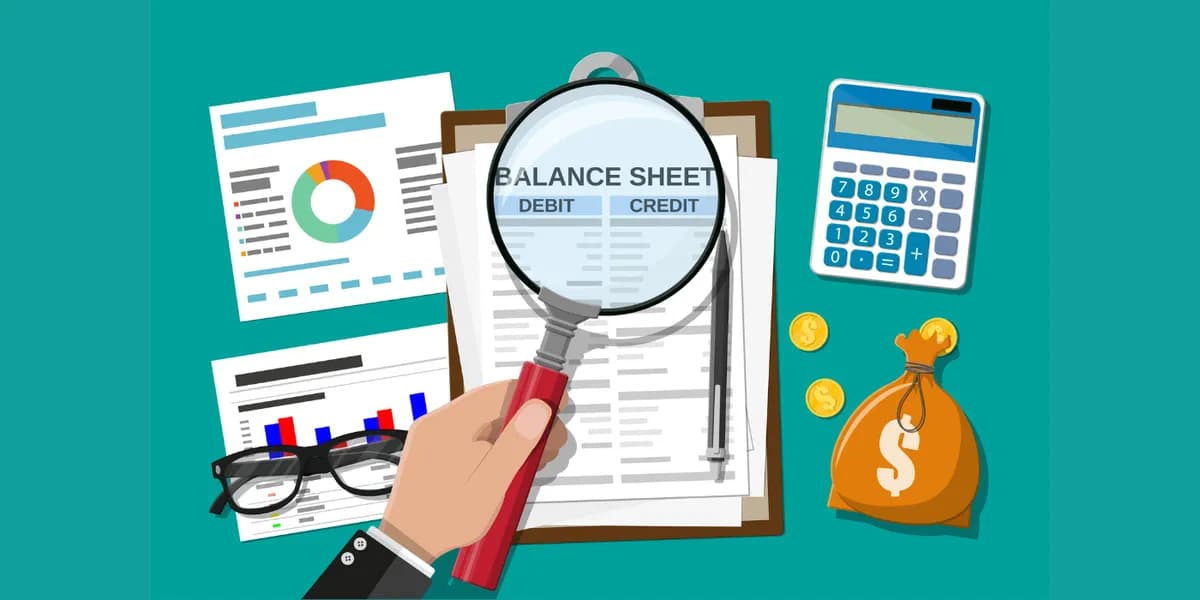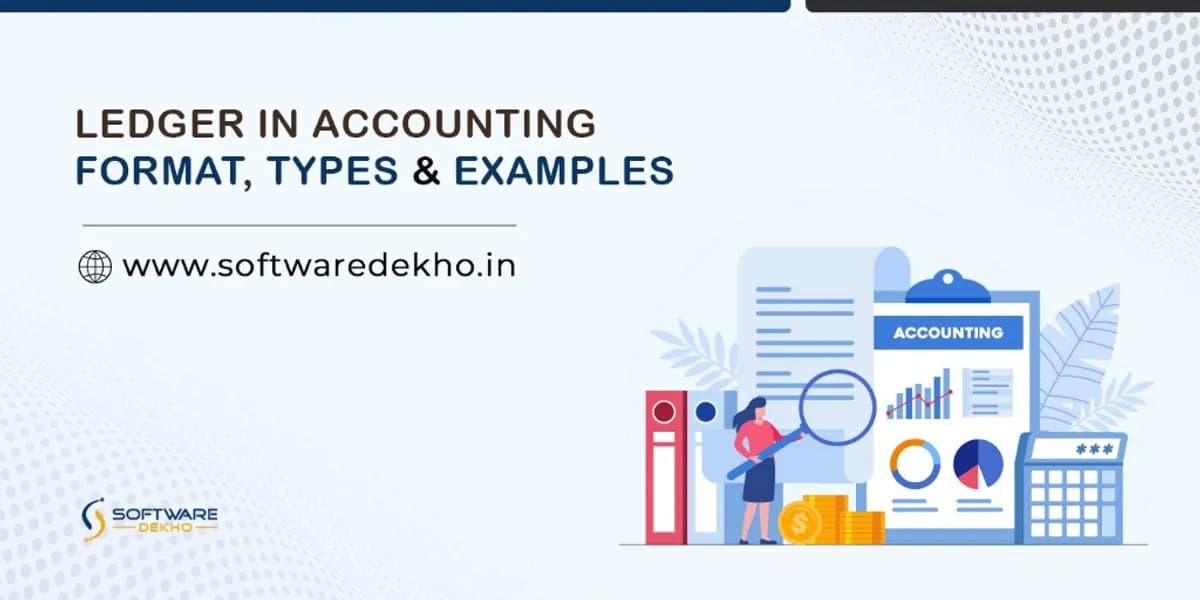Ledger in Accounting – Format, Types, and Examples
In India, keeping good track of your business money is like having a roadmap for success! Just like any journey, you need to know how much money comes in (sales), how much goes out (expenses), and what you have left over. Ledgers in accounting are the tools that help you achieve this. Keeping clear records of this information helps you make smart choices about your business, like buying new equipment or hiring more staff.
These records are also important because of a tax called GST, which most businesses in India need to follow. Ledgers are like special notebooks where you write down all your business transactions. They use a system called "double-entry bookkeeping" to make sure everything is balanced.
By keeping your ledgers up-to-date, you can easily create reports that show the health of your business. These reports are important for people who have invested in your business, anyone who cares about your company's success, and the tax man!
This article will explain what ledgers are, how they work, and why they're important for businesses in India. We'll even show you some real-life examples to make things clear. So, get ready to learn all about ledgers and become a money whiz for your business!
Ledger in Accounting- Format
The T-account structure:
Imagine a "T" shaped like a crossroads. Ledgers use this format to organize financial transactions for each account in your business. This specific layout, known as the ledger format, ensures all the details are captured in a clear and consistent way.
The left side of the "T" is called the debit and the right side is called the credit. Think of these sides like two buckets on a scale. Whatever goes into the debit bucket increases the value of that account, and whatever goes into the credit bucket increases the value of something else. The key is to keep the scale balanced!
Double-entry bookkeeping principle:
This seems difficult, but it's actually straightforward. Double-entry bookkeeping ensures every transaction has two parts, recorded in separate accounts with equal amounts. It's like a two-way street – for every action, there's a reaction.
Here's an example: Imagine you sell a product worth ₹1,000 to a customer on credit. This transaction has two sides:
Sale: Your sales account increases by ₹1,000 (credit), because you've earned money.
Customer: You also need to record that the customer now owes you money. This goes into the accounts receivable account (debit) for ₹1,000.
See how both sides balance out at ₹1,000? This ensures your records are accurate and reflect the complete picture.
Posting transactions to the ledger:
Think of your ledger as a big book with pages for each account in your business. These pages are formatted according to the ledger format – typically using the T-account structure we discussed earlier. The journal, on the other hand, is like a daily record where you write down all your transactions chronologically (date by date).
Posting transactions means transferring this information from the journal to the individual ledger accounts using the ledger format. This involves copying the date, a brief description of the transaction, and the amount (using debit and credit as explained earlier).
Here are some common transactions you'll encounter:
Sales: When you sell a product or service for cash, you debit your cash account (money coming in) and credit your sales account (income earned).
Purchases: If you buy something for your business on credit, you debit your inventory account (items you have) and credit your accounts payable account (money you owe).
Payments: When you pay off a debt, you debit your accounts payable account (money you no longer owe) and credit your cash account (money going out).
By consistently recording these transactions in your ledgers using the ledger format, you'll have a clear picture of your business's financial health at any given time.
Ledger in Accounting- Types
Ledgers in accounting might seem complex at first, but it's all about organization! Ledgers come in different types, each serving a specific purpose. Let's explore the three main types of ledgers you'll encounter in your business:
1. The General Ledger:
Think of the general ledger as the central hub of your accounting system. It acts like a giant book containing all the accounts used in your business. These accounts can be broadly categorized into five main groups:
Assets: These represent the things your business owns, like cash, inventory, and equipment.
Liabilities: These represent the money you owe to others, such as loans payable and accounts payable (money owed to suppliers).
Equity: This reflects the owner's investment in the business and any retained earnings (profits not distributed as dividends).
Revenue: This represents the income earned by your business through sales of goods or services.
Expenses: These represent the costs incurred by your business in operating, like rent, salaries, and utilities.
The general ledger summarizes the activity for each of these accounts. It shows the opening balance (money in the account at the beginning of a period), debits and credits throughout the period, and the closing balance (money in the account at the end of the period).
2. Subsidiary Ledgers:
While the general ledger provides a high-level overview, sometimes you need to delve deeper. This is where subsidiary ledgers come in. These are separate ledgers that provide detailed records for specific types of accounts within the general ledger.
Here are three common subsidiary ledgers used extensively in Indian businesses:
Accounts Receivable Ledger: This ledger tracks money owed by customers who have purchased goods or services on credit. It maintains individual accounts for each customer, recording the date and amount of each sale on credit, as well as any payments received. This helps you stay on top of your outstanding receivables and ensure timely collection of payments.
Accounts Payable Ledger: Similar to accounts receivable, but on the flip side, this ledger tracks money owed to suppliers for purchases made on credit. It manages individual accounts for each supplier, recording the date and amount of each purchase and any payments made. This ensures you keep track of your payables and maintain good relationships with your suppliers.
Inventory Ledger: This ledger is crucial for businesses that deal with physical products. It tracks the inflow (purchases) and outflow (sales) of inventory, along with the current stock levels. This helps you maintain optimal stock levels, avoid stockouts, and minimize storage costs.
By utilizing the T-account structure and double-entry bookkeeping principles across all types of ledgers, you can ensure accurate and compliant financial reporting in India.

3. Private Ledgers:
There might be some confidential information you don't want to include in the general ledger. This is where private ledgers come in handy. These are separate ledgers used to record sensitive information like salaries paid to employees, drawings made by the owner, or petty cash transactions. Access to private ledgers is typically restricted for confidentiality purposes.
By utilizing the T-account structure and double-entry bookkeeping principles, you can ensure accurate and compliant financial reporting in India.
Ledger in Accounting- Examples
Let's see how transactions translate into actual ledger examples, using real-life scenarios relevant to Indian businesses. This will help you visualize how ledgers record financial activity:
Scenario 1: Selling a Shirt with GST (₹500 including 18% GST)
Sale increases income (Sales Account - Credit ₹500)
Customer owes money if sold on credit (Accounts Receivable - Debit ₹500)
GST payable to government (GST Payable Account - Debit ₹90)
Scenario 2: Buying Pens on Credit (10 pens for ₹10 each)
Inventory increases (Inventory Account - Debit ₹100)
Owe money to supplier (Accounts Payable Account - Credit ₹100)
Scenario 3: Paying Employee Salaries (₹20,000)
Salary expense incurred (Salary Expense Account - Debit ₹20,000)
Cash used for payment (Cash Account - Credit ₹20,000)
Remember: These are just few ledger examples, and specific accounts may vary. But double-entry bookkeeping and T-accounts ensure balanced records.
Ledgers are essential for any business. They keep track of all your money coming in (sales) and going out (expenses), just like a scorecard in a game. This helps you make smart decisions and ensures you comply with regulations like GST.
You must conduct thorough research and read user reviews to choose the best software for your needs. So, take a look at our website to understand better!






